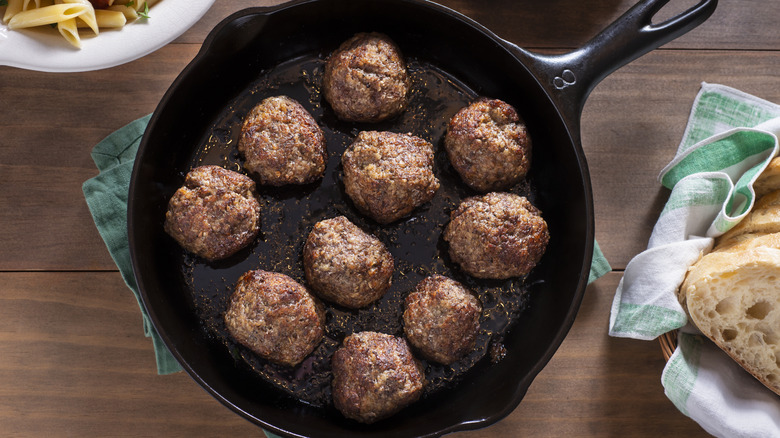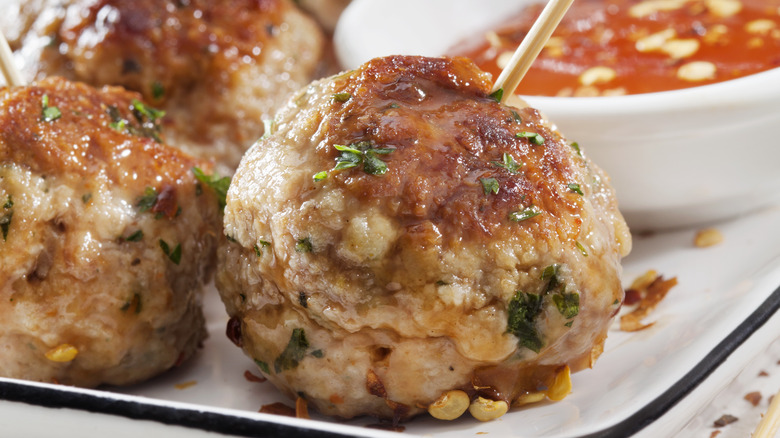Why Liquid Is Such An Important Ingredient For Perfect Meatballs
Meatballs are simple in theory — just roll together some kind of ground meat and some seasoning, and you're good to go. But to truly take your meatballs to the next level, you'll need to add more to the mixture than just ground meat. In order to make sure they stay together and maintain moisture, you're going to have to add some kind of liquid. However, it's a bit more complicated than that. While incorporating cream or stock into the ground meat will indeed add some moisture, to achieve a perfectly soft yet chewy texture, you need to employ a panade.
A panade is a fancy term for some starchy food, like bread, breadcrumbs, or crackers soaked in liquid, often milk. The bread literally soaks up the milk, forming a thick paste that adds richness to the dish without any noticeable mushiness. A well-made panade will seamlessly blend into the mixture, imparting a wonderfully tender texture, especially to lean meats like chicken and turkey.
Getting creative with the liquid
The choice of liquid is crucial to the flavor profile you're aiming for. While milk is the classic option, different liquids can add richness, impart a unique flavor, or even much-needed sharpness. Your choice will depend on the type of meat you're using and your personal taste. If, for example, you're working with fattier ground beef, like 80/20 (20% fat), using a liquid without added fat, such as water or broth, can prevent the meatballs from becoming too heavy. The panade will make the meatballs tender, but it won't make them overly rich. You could even consider using a bit of marinara sauce or white wine to introduce a hint of sweetly tangy acidity to cut through the fat.
On the other hand, super lean meats like turkey or chicken might benefit from a liquid with more texture, such as milk or buttermilk. The extra fat will prevent these leaner meats from drying out and help carry any herb flavors through the meatball. Lower-fat yet intensely flavorful meats like pork or lamb could use liquid with a complementary strong profile like green or Kalamata olive juice or fish sauce for something punchy and unexpected.
Tips for making a panade
When it comes to the starchy element of the panade, almost anything that absorbs liquid will work. The classic choice is leftover bread or traditional breadcrumbs, but different types of crumbled crackers can also be used. You'll need to adjust the amount of liquid you use for different types of starch; softer bread will require less moisture to become fully saturated.
To make a proper panade, you need to add the liquid to the bread or crackers before incorporating them into the meat and seasonings. Timing is also key: The starch needs a few minutes to soak up the liquid first to impart the proper flavor and texture. While the ratio will vary depending on the type of binder you are using, you'll want to tear, crumble, or crush up the bread or crackers in a bowl to increase surface area before adding the liquid and mashing them together. You may need to experiment with the liquid to find the ideal ratio that works best for you. Now, you can make the perfect meatballs easily.


